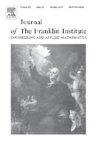A switching method for the event-triggered practical tracking control of a class of uncertain output-constrained high-order nonlinear systems
IF 3.7
3区 计算机科学
Q2 AUTOMATION & CONTROL SYSTEMS
Journal of The Franklin Institute-engineering and Applied Mathematics
Pub Date : 2025-02-01
DOI:10.1016/j.jfranklin.2025.107512
引用次数: 0
Abstract
This paper is concerned on the event-triggered practical tracking control for a class of uncertain high-order nonlinear systems with output-constraint. Remarkably, the system under investigation not only considers output constraint, but also involves more serious uncertainties which are reflected from unknown control directions and input powers. Such two distinguished features make the traditional method technically more difficult to apply, and consequently a novel switching event-triggered control scheme is proposed in this paper. Specifically, a switching time-triggered controller is first designed based on certain critical event, in which an event-triggered mechanism is chosen to tune the controller parameters via switching in two families of predefined sequences, and in turn to compensate the serious uncertainties. Combining the event that used for switching mentioned above with another new one that is carefully chosen by incorporating the compensation of unknown input power into the sampling error of control input, an event-triggered mechanism is designed and then brings a switching event-triggered controller. Finally, it is shown that the designed controller guarantees that, along with the stopping of the switching of controller parameters, all the signals of the resulting closed-loop system are bounded while system output practically tracks the reference signal without any violation of the output constraint, and moreover, Zeno phenomenon is excluded by showing all the sampling intervals are lower bounded by certain positive constant. Two simulation examples are provided to validate the effectiveness of the proposed theoretical results.
求助全文
约1分钟内获得全文
求助全文
来源期刊
CiteScore
7.30
自引率
14.60%
发文量
586
审稿时长
6.9 months
期刊介绍:
The Journal of The Franklin Institute has an established reputation for publishing high-quality papers in the field of engineering and applied mathematics. Its current focus is on control systems, complex networks and dynamic systems, signal processing and communications and their applications. All submitted papers are peer-reviewed. The Journal will publish original research papers and research review papers of substance. Papers and special focus issues are judged upon possible lasting value, which has been and continues to be the strength of the Journal of The Franklin Institute.

 求助内容:
求助内容: 应助结果提醒方式:
应助结果提醒方式:


